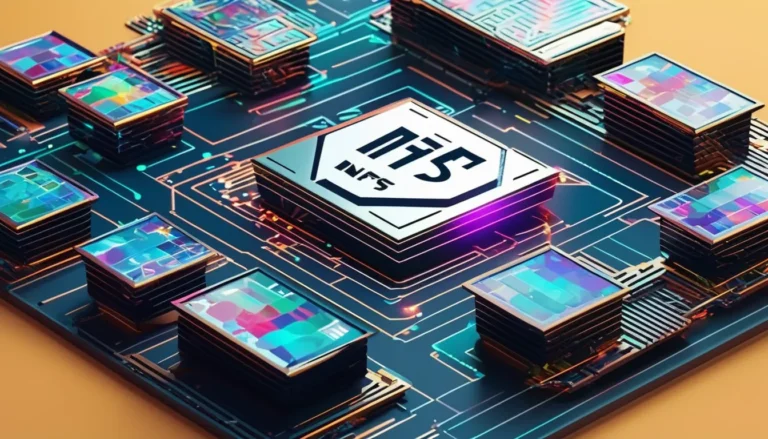DeFi Trends to Watch in 2025: The Future of Decentralized Finance

Decentralized Finance (DeFi) has emerged as one of the most revolutionary aspects of the blockchain and cryptocurrency space, offering new opportunities for individuals and businesses to engage in financial activities without relying on traditional banks or intermediaries. By leveraging smart contracts, decentralized applications (dApps), and blockchain networks, DeFi provides a more transparent, efficient, and accessible financial ecosystem. As we enter 2025, several key trends are poised to shape the future of DeFi in the USA and globally.
1. Mainstream Adoption of DeFi Platforms
Over the past few years, DeFi platforms have gained significant traction, particularly among crypto enthusiasts and tech-savvy users. In 2025, the trend of mainstream adoption is expected to accelerate as DeFi platforms evolve to offer more user-friendly interfaces and integrate with traditional financial systems.
Several factors will drive this mainstream adoption:
- Improved User Experience: As DeFi protocols mature, platforms will focus on making their interfaces more intuitive and accessible to the average consumer. With enhanced design and simplified processes, newcomers to DeFi will be able to navigate these platforms more easily, fostering wider participation.
- Educational Initiatives: As DeFi grows, educational resources will become more widespread, helping users understand how to safely and effectively engage in decentralized finance. Financial institutions, cryptocurrency exchanges, and online communities will play a significant role in educating the public about the benefits and risks of DeFi.
DeFi is poised to move beyond just crypto enthusiasts and early adopters, reaching a broader audience that seeks alternatives to traditional financial products. As more people explore decentralized finance, it could lead to a substantial shift in how financial transactions and investments are handled in the USA.
2. Interoperability Between Blockchains
For DeFi to achieve its full potential, interoperability between different blockchain networks is essential. Currently, many DeFi protocols are limited to specific blockchain ecosystems such as Ethereum, Binance Smart Chain, or Solana. In 2025, cross-chain interoperability will be a major trend as DeFi platforms develop solutions to allow seamless communication and asset transfers between different blockchains.
This will benefit users in the USA and beyond in several ways:
- Access to More Liquidity: Cross-chain solutions will allow users to access liquidity across various blockchain networks, creating a more robust and efficient financial ecosystem. This could result in better trading opportunities, faster transactions, and lower fees.
- Diversification of DeFi Products: With enhanced interoperability, users can access a broader range of financial products from different blockchain ecosystems, increasing the choices available in the DeFi space.
- Enhanced Security: Interoperability solutions are expected to come with robust security features, ensuring that assets can be transferred safely and efficiently across different blockchains. The use of technologies like atomic swaps and bridges will play a critical role in this development.
Interoperability will enable a more interconnected DeFi ecosystem, making it easier for users in the USA to take advantage of various decentralized finance services regardless of the blockchain they are using.
3. Decentralized Identity (DID) Solutions
As DeFi platforms continue to grow, the need for decentralized identity solutions will become more pronounced. Traditional financial services rely heavily on centralized identity verification processes, such as KYC (Know Your Customer) and AML (Anti-Money Laundering) checks, to prevent fraud and money laundering. However, these processes often involve personal data and can create privacy concerns.
In 2025, decentralized identity solutions are expected to gain traction, offering users more control over their personal data while maintaining compliance with regulatory standards. These decentralized identities will be based on blockchain technology and will allow individuals to maintain a secure, verifiable, and private digital identity that they can use across DeFi platforms.
For users in the USA, decentralized identity could lead to:
- Enhanced Privacy: Users will have more control over what personal information they share and with whom, reducing the risk of data breaches and identity theft.
- Increased Security: Decentralized identity solutions can reduce the risk of fraud by ensuring that identity verification is tamper-proof and secure.
- Seamless Access to DeFi Services: A secure and portable digital identity will allow users to access DeFi services without the need for repeated KYC processes, streamlining onboarding and improving the overall user experience.
The rise of decentralized identities in 2025 will help build trust in the DeFi ecosystem and enable broader adoption of decentralized financial products and services.
4. Regulation of DeFi and Compliance Standards
As DeFi continues to grow, regulation will become an increasingly important factor. In 2025, governments and regulatory bodies in the USA and worldwide will likely introduce clearer guidelines and regulations to ensure the legitimacy of DeFi projects, protect consumers, and prevent illegal activities such as money laundering and fraud.
Key aspects of DeFi regulation to watch for in 2025 include:
- Security and Consumer Protection: Regulators will focus on ensuring that DeFi platforms provide adequate safeguards to protect users from hacks, scams, and fraudulent schemes. This will likely involve setting standards for smart contract auditing and platform security.
- Taxation of DeFi Gains: As DeFi products become more widely used, tax authorities will need to establish clear guidelines on how gains from decentralized finance, such as yield farming, staking, and liquidity provision, should be taxed. In the USA, the IRS has already started issuing guidance on cryptocurrency taxation, and similar measures are expected for DeFi in the coming years.
- Anti-Money Laundering (AML) and Know Your Customer (KYC) Requirements: DeFi platforms will likely be required to implement stronger AML and KYC protocols to comply with regulations, while still maintaining the decentralized nature of their services. This will be a delicate balancing act, as too much regulation could undermine the core principles of decentralization.
The regulatory landscape for DeFi will play a critical role in determining its future growth. Clear regulations will bring greater legitimacy to DeFi platforms, allowing them to operate in compliance with existing financial laws while still offering the benefits of decentralization.
5. DeFi Lending and Borrowing Expansion
Lending and borrowing are two of the most popular use cases in the DeFi space. In 2025, the DeFi lending and borrowing market is expected to grow exponentially as more innovative products and services emerge to cater to the needs of individuals and businesses.
Some key trends to watch in the DeFi lending space include:
- Institutional Participation: Institutional investors are showing increasing interest in DeFi lending platforms as they seek higher yields and alternative investment opportunities. In 2025, we can expect to see more institutional involvement in DeFi lending markets, which will bring increased liquidity and credibility to these platforms.
- Credit Scoring Systems: As DeFi lending expands, the need for decentralized credit scoring systems will become more prominent. In the traditional finance world, credit scores are used to assess an individual’s ability to repay loans. DeFi platforms will develop innovative ways to assess creditworthiness based on factors like transaction history, staking behavior, and collateralized assets.
- NFT Collateralization: Non-fungible tokens (NFTs) are gaining popularity as a form of digital ownership, and in 2025, they may also be used as collateral for DeFi loans. This would open up new possibilities for creators and collectors to leverage their NFT assets in the DeFi space.
DeFi lending and borrowing services will continue to evolve in 2025, offering new ways for users to access capital, earn interest, and manage their financial portfolios outside of traditional banks.
6. The Rise of DeFi Insurance
DeFi insurance is an emerging sector that aims to provide decentralized solutions for protecting against risks in the blockchain and crypto space. In 2025, we expect to see the growth of decentralized insurance platforms that offer coverage for risks such as smart contract failures, hacks, and system failures.
Some key trends in DeFi insurance include:
- Coverage for DeFi Protocols: DeFi insurance platforms will offer coverage for users participating in decentralized financial activities. This could include protection against smart contract vulnerabilities or the failure of lending protocols.
- Peer-to-Peer Insurance Models: Decentralized insurance platforms will enable peer-to-peer insurance models, where users can pool their resources to provide coverage for each other. This approach eliminates the need for traditional insurance companies and intermediaries.
- Transparency and Efficiency: By leveraging smart contracts, DeFi insurance platforms can automate claims processing and payouts, ensuring greater transparency and efficiency in the insurance process.
DeFi insurance will provide a new layer of security for users in the DeFi space, enabling individuals to mitigate risks associated with their participation in decentralized finance.
Conclusion
The future of DeFi in 2025 is filled with exciting possibilities, as the ecosystem continues to mature and evolve. From increased mainstream adoption and interoperability to decentralized identity solutions, regulation, and the rise of DeFi lending, the trends discussed in this article will shape the next phase of decentralized finance in the USA and beyond.
As DeFi platforms become more user-friendly, secure, and integrated with traditional financial systems, they will offer new opportunities for individuals and businesses to take control of their financial futures. However, it is important to keep an eye on the regulatory environment and potential risks associated with DeFi, as these could significantly impact the growth and stability of the ecosystem.
Ultimately, 2025 will be a pivotal year for DeFi, as it transitions from a niche industry to a mainstream financial movement. By staying informed about these trends and embracing the opportunities they present, individuals in the USA can position themselves to thrive in the decentralized financial landscape.




